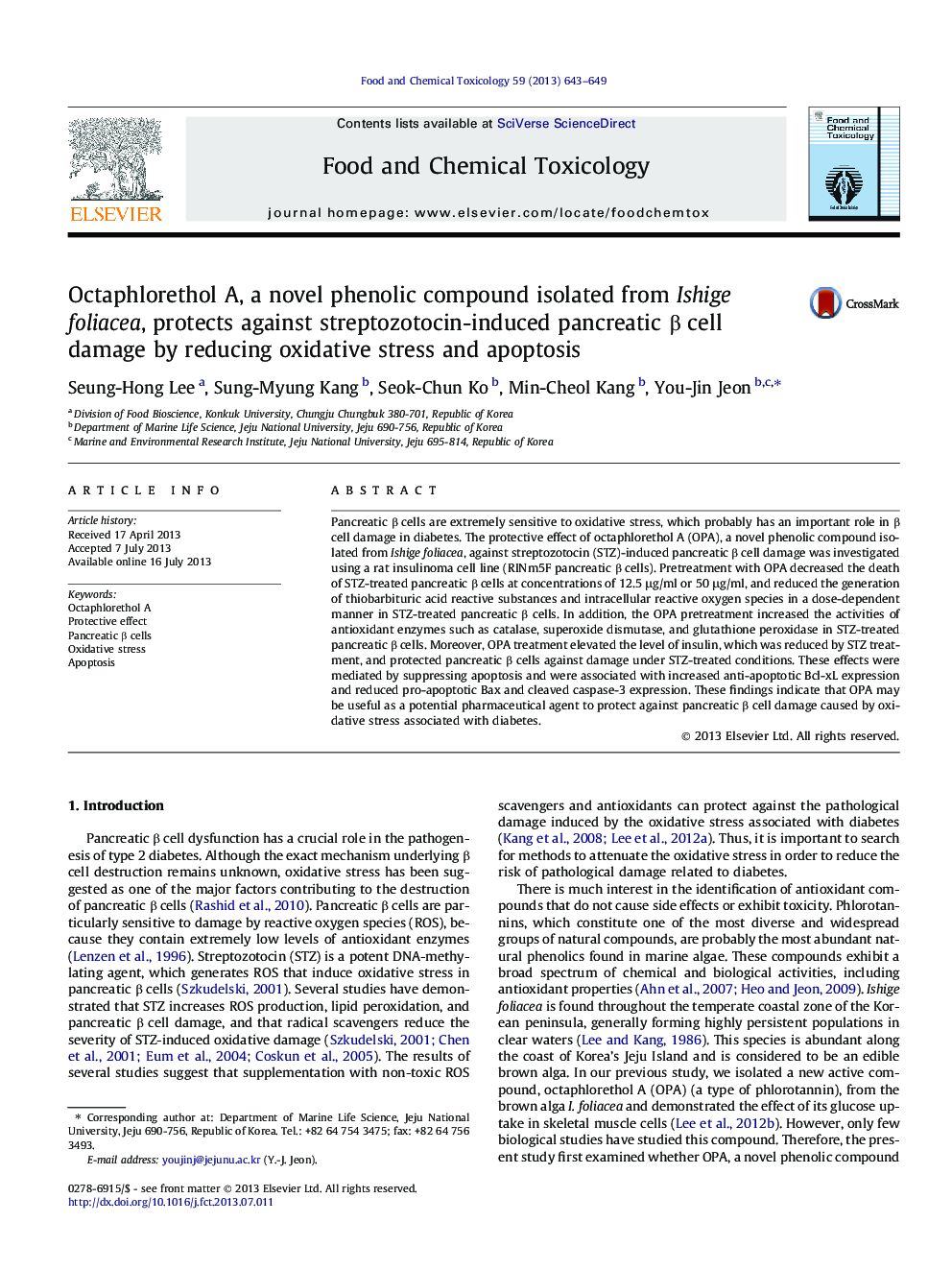| Article ID | Journal | Published Year | Pages | File Type |
|---|---|---|---|---|
| 5851130 | Food and Chemical Toxicology | 2013 | 7 Pages |
â¢We first investigate the protective effect of octaphlorethol A (OPA) against STZ-induced pancreatic β cells damage.â¢OPA attenuate STZ-induced pancreatic β cells damage by reducing oxidative stress and apoptosis.â¢Moreover, OPA increased activities of antioxidant enzyme including CAT, SOD, GSH-px in STZ-treated pancreatic β cells.
Pancreatic β cells are extremely sensitive to oxidative stress, which probably has an important role in β cell damage in diabetes. The protective effect of octaphlorethol A (OPA), a novel phenolic compound isolated from Ishige foliacea, against streptozotocin (STZ)-induced pancreatic β cell damage was investigated using a rat insulinoma cell line (RINm5F pancreatic β cells). Pretreatment with OPA decreased the death of STZ-treated pancreatic β cells at concentrations of 12.5 μg/ml or 50 μg/ml, and reduced the generation of thiobarbituric acid reactive substances and intracellular reactive oxygen species in a dose-dependent manner in STZ-treated pancreatic β cells. In addition, the OPA pretreatment increased the activities of antioxidant enzymes such as catalase, superoxide dismutase, and glutathione peroxidase in STZ-treated pancreatic β cells. Moreover, OPA treatment elevated the level of insulin, which was reduced by STZ treatment, and protected pancreatic β cells against damage under STZ-treated conditions. These effects were mediated by suppressing apoptosis and were associated with increased anti-apoptotic Bcl-xL expression and reduced pro-apoptotic Bax and cleaved caspase-3 expression. These findings indicate that OPA may be useful as a potential pharmaceutical agent to protect against pancreatic β cell damage caused by oxidative stress associated with diabetes.
